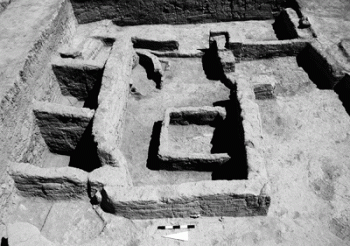American Journal of Archaeology | The Journal of the Archaeological Institute of America
You are here
Investigating the Early Pottery Neolithic of Northern Syria: New Evidence from Tell Sabi Abyad
January 2006 (110.1)
Investigating the Early Pottery Neolithic of Northern Syria: New Evidence from Tell Sabi Abyad
The 2001–2003 excavations at Tell Sabi Abyad in northern Syria have provided important new information on the nature and development of the Pottery Neolithic settlement at the site in the seventh and sixth millennia B.C. The fieldwork has produced a long sequence of small and continually shifting occupations, in the order of 0.5–1.0 ha, each with rich assemblages of very early ceramics and other artifacts. There is proof for localized abandonment and the episodic contraction and expansion of occupation over the site. Living in small, dispersed groups, leaving extensive areas of the site uninhabited, was a basic practice of Neolithic settlers at Tell Sabi Abyad (and probably elsewhere as well). Of particular note was the discovery of well-preserved building levels belonging to the initial stage of the Pottery Neolithic, ca. 6600–6200 B.C., providing insight into the character of settlement and material culture of one of the poorest known periods in the history of Syria and the northern Levant. Single- and multiroomed houses came to light, often with white-plastered floors and walls. The ceramics from these buildings are among the earliest found in the Near East to date. Distinct changes in the organization of the communities and the material culture took place at ca. 6200 B.C. and were associated with, among other things, the appearance of circular buildings and clay sealings as indicators of controlled storage.
Investigating the Early Pottery Neolithic of Northern Syria: New Evidence from Tell Sabi Abyad
By Peter M.M.G. Akkermans, René Cappers, Chiara Cavallo, Olivier Nieuwenhuyse, Bonnie Nilhamn, and Iris N. Otte
American Journal of Archaeology Vol. 110, No. 1 (January 2006), pp. 123–156
DOI: 10.3764/aja.110.1.123
© 2006 Archaeological Institute of America


